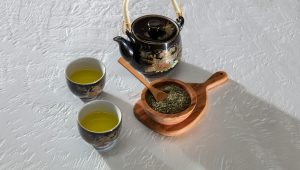Winter can feel tough for many of us. The days get shorter, the skies turn gray, and sometimes, our mood takes a dip. If you feel extra sad, tired, or unmotivated during winter, you might be dealing with Seasonal Affective Disorder, or SAD. It’s a type of depression that comes and goes with the seasons, often hitting hardest in winter. But don’t worry—you’re not alone, and there are ways to feel better! Let’s explore what SAD is and how you can beat the winter blues.
What is Seasonal Affective Disorder?
SAD is like a seasonal version of depression. It usually starts in fall or winter and fades away in spring. The lack of sunlight during winter months messes with our body’s natural rhythms, making us feel low, sleepy, or even hopeless. About 5% of people in the U.S. experience SAD, but many more get milder winter blues. The good news? There are simple steps to lift your spirits.
Why Does SAD Happen?
Less sunlight in winter can throw off your body’s balance. Here’s how:
- Less Sunlight: Affects your body’s internal clock, making you feel tired or out of sync.
- Melatonin Overload: Less light leads to more melatonin, which makes you sleepy.
- Low Serotonin: Sunlight boosts this feel-good brain chemical—less sun can lower your mood.
Common Symptoms of SAD
SAD feels different for everyone, but here are some common signs:
- Feeling sad, irritable, or hopeless most days
- Low energy or tired all the time
- Sleeping too much or difficulty waking up
- Craving carbs or overeating
- Losing interest in things you enjoy
- Difficulty focusing
- Feeling worthless or guilty
7 Coping Strategies for Winter Blues
1. Try Light Therapy
Light therapy mimics natural sunlight and can boost your mood and energy.
- Use a 10,000 lux light box for 20–30 minutes each morning.
- Sit 1–2 feet away, facing it indirectly.
- Consult your doctor before starting.
2. Get Moving
Exercise releases feel-good chemicals and helps shake off low moods.
- Take a 15-minute walk—even on cloudy days.
- Try yoga, dancing, or indoor workouts.
- Aim for 20–30 minutes most days.
3. Stay Connected
Social connection is a powerful mood booster.
- Call a friend or meet for coffee.
- Join a book club, art class, or hobby group.
- Plan cozy get-togethers at home.
4. Eat Healthy Foods
What you eat affects how you feel. Choose foods that fuel you, not drain you.
- Load up on fruits and vegetables.
- Choose whole grains like oats and brown rice.
- Include proteins like eggs, fish, or beans.
- Limit sugar—quick energy spikes lead to crashes.
5. Stick to a Sleep Routine
Good sleep helps your mood. SAD can make you oversleep, but balance is key.
- Go to bed and wake up at the same time daily.
- Keep your room dark, quiet, and cool.
- Avoid screens before bed.
- Take short naps (20 mins), but don’t overdo it.
6. Brighten Your Space
Your environment affects your energy and mood.
- Open curtains and let in natural light.
- Add colorful pillows, blankets, or artwork.
- Use warm lighting to make your home feel cozy.
7. Practice Self-Care
Take time to recharge. It’s not selfish—it’s survival.
- Write in a journal or gratitude notebook.
- Take warm baths or try meditation.
- Explore hobbies like painting, baking, or music.
When to Seek Help
If you feel very sad, lose interest in everything, or have harmful thoughts, reach out for support.
- Talk to your doctor or therapist.
- They may suggest therapy, medication, or both.
- Call a hotline like 1-800-950-6264 (NAMI) for help.
💡 Remember: Asking for help is a sign of strength.
You Can Beat the Winter Blues!
Seasonal Affective Disorder is real, but it doesn’t have to control your life. Small changes—like light therapy, moving more, and staying connected—can help you feel better. Start with one or two tips that speak to you and build from there. If things feel too hard, don’t go it alone. Talk to someone you trust or a mental health professional.
🌸 Spring is always on the way. Brighter days are ahead—you’ve got this!









